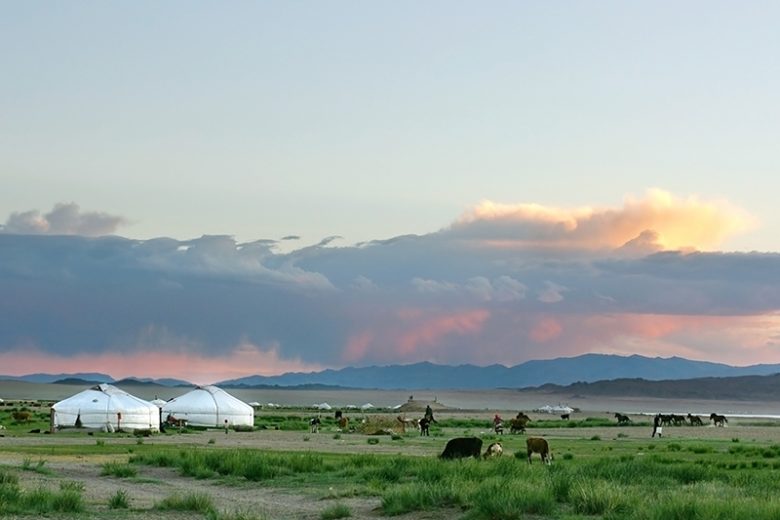
Bordered by Russia to the north and China to the east, south and west, Mongolia — known as the country of blue sky — is one of the most sparsely populated nations in the world. The arid steppe terrain is home to nomadic shepherd families who endure long winters and short summers, ferrying their livestock in search of gentler pastures.
Nomadic Mongolians spend their days caring for livestock, primarily goats, sheep, yaks, camels and horses, and in turn, the livestock provides the shepherds with nearly everything they need, including felt for insulating the traditional ger (a circular white tented dwelling) and meat and dairy for sustenance.
The traditional Mongolian diet is broken into two primary food groups that are eaten seasonally. Winter is the "brown season" and abundant meat (especially mutton) is consumed during these cold months. The "white season" – summer – is all about dairy. In Mongolia, white foods are traditionally thought to relax the digestive system after months of heavy meat intake.
By some estimates, Mongolians have more than 2,000 iterations of dairy-based dishes, from tarag (yogurt), byaslag (cheese made from cattle, yak, goat or sheep milk) and eezgii (milk curds roasted until golden and hard, a traditional snack carried by shepherds) to aaruul (curdled and sun-dried cow or yak milk), suutei tsai (salt-seasoned milk tea) and khailmag (caramelized clotted cream).
Mongolia's national beverage, airag, is made of mares' milk filtered through a cloth and poured into a leather sack that hangs near the ger's entrance where it ferments. With an alcohol content of up to 7 percent, airag is often served in small bowls to guests as a token of hospitality.
